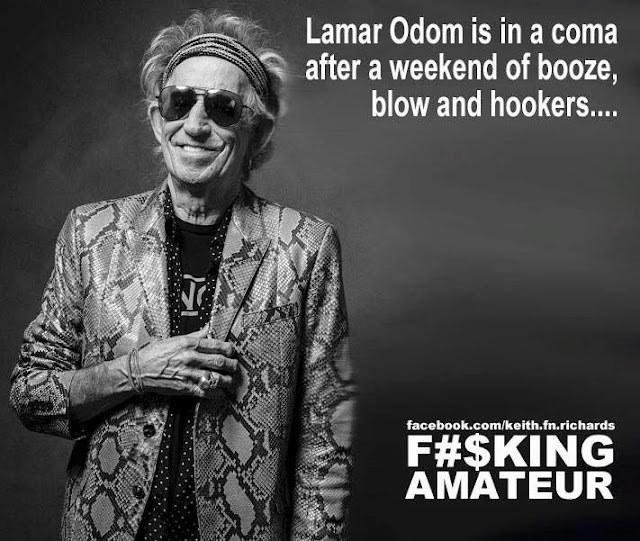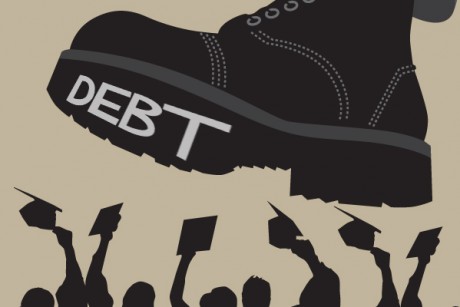
In Part One of this three part article I laid out the groundwork of how the Federal Reserve is responsible for the excessive level of debt in our society and how it has warped the thinking of the American people, while creating a tremendous level of mal-investment. In Part Two I focused on the Federal Reserve/Federal Government scheme to artificially boost the economy through the issuance of subprime debt to create a false auto boom. In this final episode, I’ll address the disastrous student loan debacle and the dreadful global implications of $200 trillion of debt destroying the lives of citizens around the world.
“When easy money stopped, buyers couldn’t sell. They couldn’t refinance. First sales slowed, then prices started falling and then the housing bubble burst. Housing prices crashed. We know the rest of the story. We are still mired in the consequences. Can someone please explain to me how what is happening in higher education is any different?This bubble is going to burst.” – Mark Cuban


Now we get to the subprimiest of subprime debt – student loans. Student loans are not officially classified as subprime debt, but let’s compare borrowers. A subprime borrower has a FICO score of 660 or below, has defaulted on previous obligations, and has limited ability to meet monthly living expenses. A student loan borrower doesn’t have a credit score because they have no credit, have no job with which to pay back the loan, and have no ability other than the loan proceeds to meet their monthly living expenses. And in today’s job environment, they are more likely to land a waiter job at TGI Fridays than a job in their major. These loans are nothing more than deep subprime loans made to young people who have little chance of every paying them off, with hundreds of billions in losses being borne by the ever shrinking number of working taxpaying Americans.
Student loan debt stood at $660 billion when Obama was sworn into office in 2009. The official reported default rate was 7.9%. Obama and his administration took complete control of the student loan market shortly after his inauguration. They have since handed out a staggering $500 billion of new loans (a 76% increase), and the official reported default rate has soared by 43% to 11.3%. Of course, the true default rate is much higher. The level of mal-investment and utter stupidity is astounding, even for the Federal government. Just some basic unequivocal facts can prove my case.
There were 1.67 million Class of 2014 students who took the SAT. Only 42.6% of those students met the minimum threshold of predicted success in college (a B minus average). That amounts to 711,000 high school seniors intellectually capable of succeeding in college. This level has been consistent for years. So over the last five years only 3.5 million high school seniors should have entered college based on their intellectual ability to succeed. Instead, undergraduate college enrollment stands at 19.5 million. Colleges in the U.S. are admitting approximately 4.5 million more students per year than are capable of earning a degree. This waste of time and money can be laid at the feet of the Federal government. Obama and his minions believe everyone deserves a college degree, even if they aren’t intellectually capable of earning it, because it’s only fair. No teenager left behind, without un-payable debt.

It seems the trillion dollars of your money being loaned to young University of Phoenix wannabes studying African Studies by Obama are being spent on hookers and blow when they are not busy taking remedial English and math courses to learn how to read, write and do maf.
What are the odds of more than 50% of that trillion ever being paid back?
Krugman is fine with it. Hookers and blow contribute to GDP too.
Submitted by Tyler Durden on 11/19/2014 10:01 -0500
Over the weekend we closed the chapter on the “mystery” of America’s collapsing labor force and the record 90+ million Americans out of the labor force. As Pew reported, confirming what we had said all along, it has little to nothing to do with Boomers retiring – simply because under ZIRP they can’t afford to retire – and everything to do with Millennials staying in school because they can’t find the well-paying jobs they had expected, raking up $1.2 trillion (and exponentially rising) in government-funded student debt in the process. To wit:
More and more Americans are outside the labor force entirely. Who are they? According to the October jobs report, more than 92 million Americans — 37% of the civilian population aged 16 and over — are neither employed nor unemployed, but fall in the category of “not in the labor force.” That means they aren’t working now but haven’t looked for work recently enough to be counted as unemployed. While that’s not quite a record — figures have been a bit higher earlier this year — the share of folks not in the labor force remains near all-time highs.
You might think legions of retiring Baby Boomers are to blame, or perhaps the swelling ranks of laid-off workers who’ve grown discouraged about their re-employment prospects. While both of those groups doubtless are important (though just how important is debated by labor economists), our analysis of Bureau of Labor Statistics data suggests another key factor: Teens and young adults aren’t as interested in entering the work force as they used to be, a trend that predates the Great Recession.
But that’s just the beginning. Because as we have also covered on various occasions in the past, there is a just as important question of just what these “students” spend their money on. Among the items revealed: “A U.S. Middle District Court indictment alleges that Price spent much of the loan money on crack cocaine, cars, motorcycles, jewelry, tattoos and video games.” And iPhones of course, because someone has to indirectly provide US subsidies to the NSA’s favorite company (read “NSA Mocks Apple’s “Zombie” Customers; Asks “Your Target Is Using A BlackBerry? Now What?”).
Now we know one more thing that America’s young adults, of whom some 24% expect that their debt will ultimately be forgiven, are blowing Uncle Sam’s debt on. The answer: high-school level classes.
According to the WSJ, “college students are increasingly spending federal financial aid and taking on debt for high school-level courses that don’t count toward a degree, despite mounting evidence the courses are ineffective and may contribute to higher dropout rates.”
Shocking? Well not really: after all when student debt is easier to procure than subprime loans in 2005, and when nobody in government actually checks if it is used prudently, is there any wonder the same individuals who recklessly will spend money they can never repay on anything but their future, will spend it on the dumbest possible things? Perhaps it is more surprising that they used it for “noble” purposes in the first place.
The number of college students taking at least one remedial course rose to 2.7 million in the 2011-2012 academic year from 1.04 million in 1999-2000, federal data show. During the same span, the amount of federal grants spent by undergraduates enrolled in at least one remedial course rose 380%, after inflation, Education Department figures show. There was also a drastic rise in remedial students taking on student debt.
The one social class most “enslaved” by this “not quite free” debt handout? Poor, underprivileged students of course, those who can least afford to graduate with tens of thousands in debt.
The trends reflect a sharp rise over the past decade in enrollment at community colleges, which disproportionately serve low-income, minority and older populations. About 40% of students entering community colleges enroll in at least one remedial course, according to the Education Department; only about 1 in 4 of them will earn a degree or certificate.
“You clearly see that a big part of the problem is that students of color, first-generation students in low socioeconomic status are getting stuck” in remedial courses, said Eloy Oakley, president of Long Beach City College in Southern California. “They’re getting placed in these courses and they’re not coming out.”
Students are typically placed in remedial courses for English and math and because they score poorly on standardized tests. Federal law permits them to spend financial aid on as much as a year’s worth of remediation.
Ironically, the very classes this debt is spent to finance essentially assure that the student will never even succeed in graduating college:
Academics and senior officials within the Education Department increasingly view the remedial courses themselves as a major barrier to college completion, particularly among minorities. Many students become discouraged and could succeed without remediation, while others could benefit from shorter, more-targeted catch-up sessions, research shows.
Multiple studies have concluded that, for most students, remediation either hurts or has no effect on their odds of earning a college degree or certificate. The studies have compared the outcomes of borderline students—those just above and just below the cutoff for getting into college-level courses. In a 2012 National Bureau of Economic Research paper, two Columbia University researchers found that students who appeared to have been misplaced in remediation were 8% more likely to drop out than those who went directly into college courses.
As a result, some schools have finally started analyzing what the IRR of remedial schooling is: Long Beach City College is experimenting with how it assesses students and places them in remedial classes. Before 2012, it placed all students based on how they scored on a standardized test. Since then, the school has launched a program to place students from local high schools based on their grade-point averages, which officials believe are a better predictor of how students will perform in college-level courses.
Within the program, the share of first-year students at LBCC going directly into college-level coursework has tripled, to 39% for English and 32% for math. And the school finds that on average, students who would have been slated for remediation are performing as well as others.
Leangkheng Ouk, 20 years old, was slated to take remedial English and math at the school because she performed poorly on her standardized test, despite being a B student in high school. Under the new system, she went directly into college-level courses in 2012 and earned a 3.8 GPA before transferring this year. She now attends California State University, Long Beach, where she is on track to earn a bachelor’s degree in business management.
“I was glad they placed me in the higher courses actually on my level, so I don’t waste time and can be able to transfer in two years,” said Ms. Ouk, a Cambodian national and U.S. permanent resident who is the first member of her family to go to college. Ms. Ouk has used scholarship money, federal aid and wages earned from a part-time job to cover her education. “If I was placed in a remedial class I would have to stay in LBCC longer. I would have used my financial aid grants.
And now, after years of delays and long after the student loan bubble reached unprecedented proportions, the Government is finally deciding to “take a look”:
Now, the high dropout rate among remedial-education students—along with a sharp rise in student debt—is fueling debate about whether the government should be more stringent in awarding student aid. Critics—ranging from some think-tank academics and conservatives to a trustee of a community-college system in Texas—say aid should be targeted toward students who are better-prepared.
Keep in mind this is the same government that lied to “stupid” Americans to pass Obamacare. Then again, considering what these same Americans spend their unsecured, garnishable debt on, perhaps Dr. Gruber’s real and only crime was getting caught.